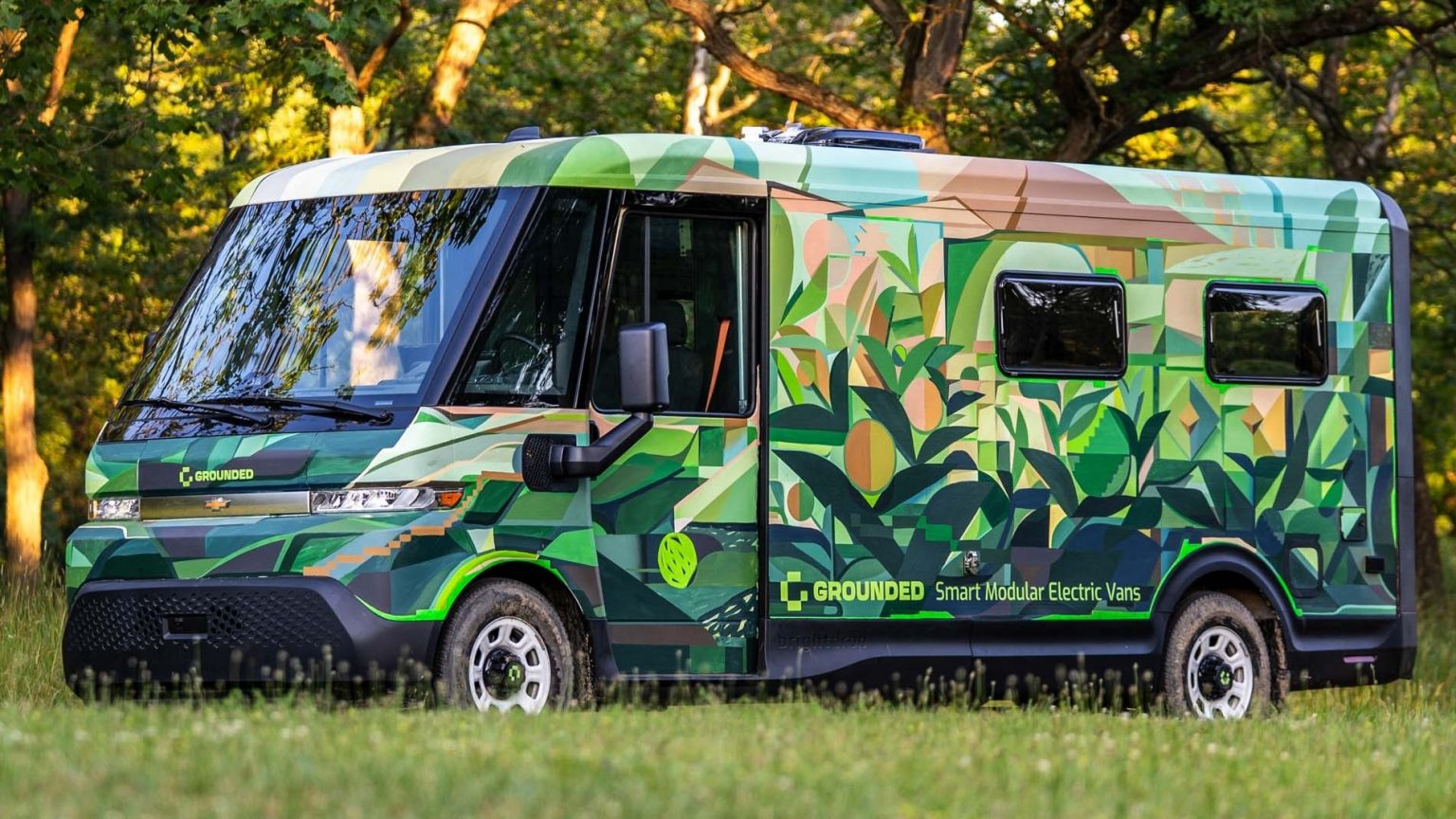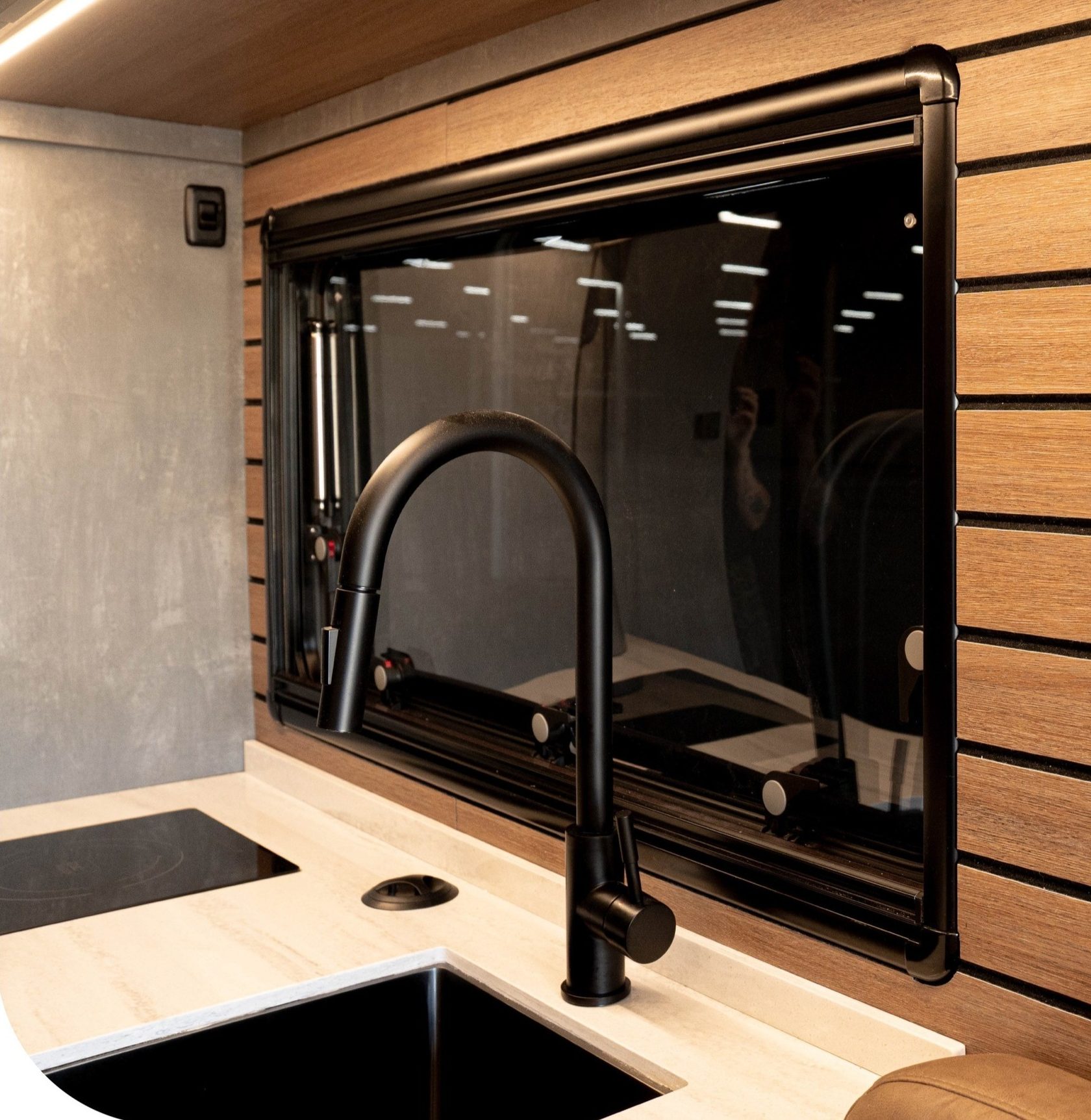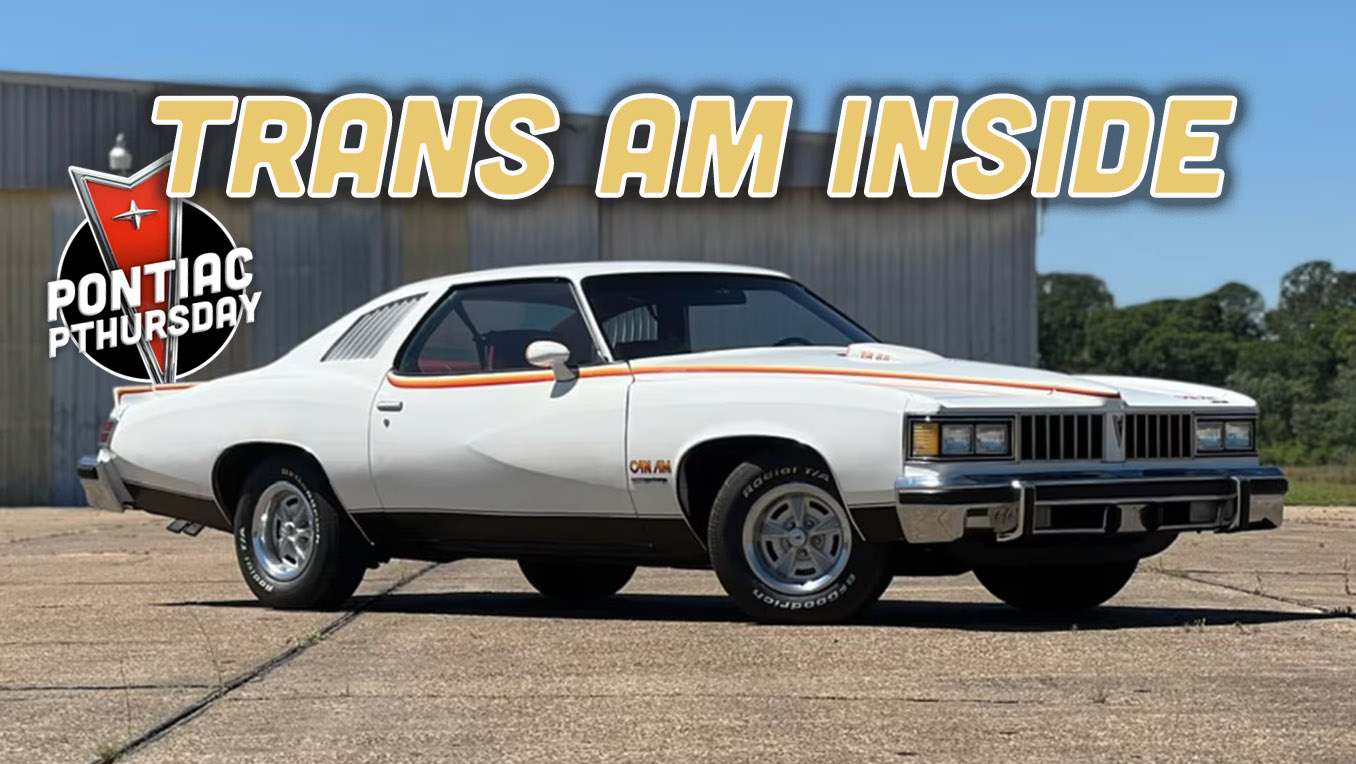The RV industry has been slow to transition to all-electric power. Motorhomes tend to be large, blocky, heavy vehicles that are driven long distances, and until recently, the all-electric commercial vehicles on the market didn’t really have the range to fit the bill. That has changed thanks to General Motors, and now RV companies are beginning to announce new all-electric production motorhomes. Coachmen, a brand of RV mega-conglomerate Forest River, just announced the RVEX, a camper van that can go 270 miles on a charge. And weirdly, the price is almost affordable.
RV companies have long struggled with the EV transition. These companies don’t usually build their own chassis, and so they depend on other companies to electrify their platforms first. It was only just a few years ago when Ford was slinging the E-Transit, a commercial van that had to be recharged about every 100 miles. RV companies experimented with E-Transit-based camper vans, and RV enthusiasts made themselves loud and clear in saying they were not interested in a van that can barely leave town without having to be recharged.
So, these companies went back to the drawing board, and as luck would have it, General Motors had just the solution with its BrightDrop van, originally designed as a great step-van for local and regional deliveries. However, RV companies are discovering the BrightDrop’s large interior space and nearly 300 miles of range make it ripe for conversion to electric RVs. Now, electric-curious RV buyers can try out a handful of different flavors of BrightDrop camper van.

All of the BrightDrop builds thus far were done by startup companies making a name for themselves. That changed this week when Forest River’s Coachmen decided to join the party with its new RVEX.
Proven Bones
Coachmen teased the RVEX last week before fully taking the wraps off of it at the 2025 Elkhart RV Dealer Open House this week. I want to get something out of the way right here and right now. RV influencers and RV blogs are heralding this as the “World’s First All-Electric Motorhome.” One of those influencers was the extremely popular Matt’s RV Reviews. It is not true that this is the world’s first all-electric motorhome, but the video is still worth a watch:
I’ll just throw one example out there. Grounded RV has been selling all-electric motorhomes for a few years now. Its first, the G1, was based on the Ford E-Transit. The Grounded G2, which was based on the BrightDrop, started production in 2023. Now, Grounded is building the G3, which is still based on the BrightDrop. Sure, Grounded is a small startup company, but it does build production RVs.
Ignoring Grounded RV, back in 2024, I wrote about another company, RollAway, which started building camper vans based on the Brightdrop platform.

In other words, Coachmen is at least a few years late to this barbecue. Coachmen isn’t even the first big RV producer to launch an electric motorhome, as Thor Industries beat Coachmen to the punch earlier this year. To be fair to Coachmen, it is not the company that’s making this “world’s first” claim, but I’m seeing that claim tossed around a lot right now, and I want to set the record straight.
Anyway, under the satin wrap sits a Chevrolet BrightDrop Zevo 600, which comes in at 24 feet long. This camper van sports Chevy’s Max Range 172 kWh 20-module battery, which Coachmen says will achieve 270 miles of range. Coachmen didn’t mention the drive layout, but the Max Range battery option requires having AWD, so it’s safe to assume that this van has dual motors and 300 HP with 390 lb-ft of torque.

This is the same configuration that RV startups have been playing around with for a while, and it’s already a proven setup among the handful of electric vehicle fans who have purchased or converted an electric camper van. Countless RVers choose to drive less than 300 miles a day, and the BrightDrop falls right into that spot. Many RVers go to campgrounds within 200 miles of their homes, anyway. Basically, unless you’re a full-time RVer, a long-distance traveler, or the kind of person who rolls across the country in a diesel pusher, this coach can likely work for you. Yes, there are a lot of people who camp pretty close to home!
But should you choose to take this long-distance, the native charging plug is CCS, and a CCS-to-NACS adaptor gets you access to the Tesla Supercharger network. GM and Pilot have also just surpassed 200 gas station-style chargers at Pilot Travel Centers along highways, so taking one of these on a long journey is possible.
Cozy Cabin

What I think is really cool is what Coachmen did inside. Coachmen, like the other RV companies, did not change how you get in and out of the BrightDrop, so entry and exit are done either through the front sliding doors or through the rear door. What I like is the rear door arrangement. Coachmen gave a great effort to hide the work van roots of the BrightDrop by fitting the rear of the coach with a split-opening tailgate. The top half of this tailgate is made out of glass.
This door features electrochromic glass for privacy. When the door is closed with the glass set to transparent, you can point a projector at the back of the glass to create a TV for anyone outdoors and behind the camper. Those outside would hear the TV through an included portable speaker.

The interior is pretty straightforward. Like other BrightDrop-based camper vans, the rear end is a dual sofa lounge and dining area. In this case, it converts into an RV king bed. Forward of that is the kitchen and the bathroom. The wet bathroom here is pretty standard fare for a camper van, and includes a 5-gallon cassette toilet and a shower. I do like how the shower does appear to be large enough for an adult to use with some comfort, which isn’t something you always get in an RV of this size.
Equipment onboard includes a 7.2 cu-ft 12V refrigerator, a Furrion convection microwave with a built-in air fryer, an 18-gallon fresh tank, a 25-gallon to 30-gallon gray tank, a single-burner induction cooktop, and an air conditioner. One interesting note is the electrical system: The van has a separate 1,000 Ah house battery, plus 1,000 watts of solar. The RV also has a 50-amp RV shore power connection in addition to the CCS charging port.

Coachmen says that it partnered with Genesis Products Inc. to create lightweight interior materials. The RVEX sports Genesis G-Lite plywood, G-Strong PET foam-core panel, vinyl surfaces, and Lisocore particleboard. Coachmen says that, due to these materials, the team managed to shave over 290 pounds from the RVEX, which the company claims is a 45 percent weight reduction compared to typical RV interior materials.
Sadly, since I am not at the RV Dealer Show, I cannot tell you if all of these materials add up to a quality interior. At the very least, they do look nice in photos. What also looks nice are the windows, which seem to be nice, big, and let in a lot of natural light.


Coachmen also notes that the RVEX has a European-style interior. This is a new sort of trend that’s going on in the RV industry right now, as buyers are finding themselves in love with European style, but want to have it in an American package with lots of power and space. The RVEX follows Coachmen’s other European-inspired effort, the Coachmen Euro Class A motorhome. You can read about my coverage of that motorhome by clicking here.
Almost Affordable

Coachmen says that, when these start appearing in showrooms soon, you can get this van for $150,000. That’s actually a bit surprising. That’s much cheaper than a well-equipped Grounded G3, which runs around $180,000. It also costs less than many Ram ProMaster-based vans. Remember the Airstream Rangeline? Yeah, that’s $158,400 now. This is a bigger, more luxurious van for less money.
Of course, there are some quirks that come with buying this van. Because the BrightDrop is primarily a delivery van, the driving cab is completely separated from the living space. Likewise, getting in and out of this thing involves either walking over the front seats or getting in through the folding tailgate. From what I can tell, Coachmen didn’t do a whole lot with the cab, so you will feel like you’re driving a delivery van when you’re piloting this thing.
Overall, I mostly love what Coachmen is doing here. This seems like a nice little camper van that a couple and their dog or cat might love. I could also see a small family taking this out to a state park for a weekend. I don’t think this is the van for road warriors, and that’s fine, because a lot of folks don’t actually take their RVs very far, anyway.
Top graphic image: Screenshot: Matt’s RV Reviews/YouTube








Perhaps the roof could be solar cells?
It’s got a lot going for it, BUT . . . watch the video around 15:45. It’s like the design brief was “make the world’s most impractical rear door.” That would get real old, real fast.
Cool RV. My only concern is the physical size of this vehicle. Many chargers are not built to accommodate large commercial vehicles. I could see situations where you arrive at a charger only to find you cannot fit in the available space.
I would also like to know this vehicle’s range at highway speed. Any EV is going to have decreased range at 70+ mph, but I presume that reduction could be more dramatic given the aerodynamics of this vehicle.
Seems like a propane system wouldn’t be the worst idea for an EV motorhome, conserve electricity for propulsion by switching the fridge to propane while in motion. Also if boondocking without a power hookup so you’re not running heat/hot water/stove off the traction battery
It’s surprising how little energy refrigerators require. I could geek-out on the numbers, but I’ll just say my Starlink dishy consumes more energy in an hour than two of my 55-quart camp refrigerators in a high-heat environment. I’ve found propane fridges finicky, and stick with DC in my use case.
Propane is great for cooking, heating and powering an electrical generator.
It’s hard to tell, but did they block off the bulkhead door behind the front seats? That would give you easy access to the rear compartment.
On the West Coast, lots of ski areas still allow for camping in the parking lot. This thing seems like a dream for that use case with the addition of a serious heater, tank heaters and ski storage / roof patio added to the top.
The seating area in the back looks like a great place to sip hot coco and schnapps with new friends.
Coming from a West Coast person who’s skied at most of the resorts, overnight parking is hit or miss. It’s becoming more difficult to find resorts allowing overnight parking. On a positive note, some California resorts offer charging stations.
Let’s assume one drives to a resort from a low elevation. The driver will not see the promised 270 miles of range in this use case for two reasons.
I love the idea of EV RVs for several reasons, but the battery energy density for my use case just isn’t here yet.
Please excuse the EV and RV nubie question. Can this recharge from the shoreline plug-in at electric campground sites and or from a gas generator?
270 miles is like from Chicago to Louisville so that is a good distance for a day’s drive.
Any idea what these Brightdrops are like to drive? Is it just as boomy, with as much wind noise, and rough ride etc as other full on commercial vans? How do plain commercial vans compare to RVs based on them? I’d assume/hope they are quieter with RV trimmings, but IDK. How (in)tolerable/pleasant would this be for those 270 miles? The only commercial vans I’ve driven have been the cargo variants of Sprinters, Econolines, Expresses, and Transits, they were all really loud and boomy, which is fine when you’re schlepping shit for work; probably not so cool when you spend $180k and want to relax on vacation/retirement.
No idea about the Brightdrop driving experience.
The noise level in B-class RVs depends on the construction materials used, the amount of sound deadening installed and tires. The most annoying noise in my namesake vehicle comes from my aggressive AT summer tires. My winter tires are closer to stock in tread pattern, and are quiet.
The brightdrop was designed in part to be an RV so it’s great to see someone using it. If the real world price is like other RVs about half that would be something. Maybe this is more of a 2/3s. It needs an Oldsmobile rebadging those lights look too similar to the aurora lights ups has used for decades.
Makes me excited to see what the vanlifers will do the rivians vans when they get their hands on them. My bet is try to copy this.
Man, right back to the same problem.
Have to walk outside to drive = zombie food.
I’m out.
Yeah, not really a well executed design. And, this might not be the right time to try and sell this.
There is a pass-through between the cab and the living space, so you don’t have to leave it to drive it.
Ah I miss read that.
Well then, that’s better.
So it needs a 50 amp connection for shore power? That’s a lot for a relatively smaller RV. Is that to cover Level 2 charging as well? Which asks the question how campsites would handle. Many I go to already call out no EV charging.